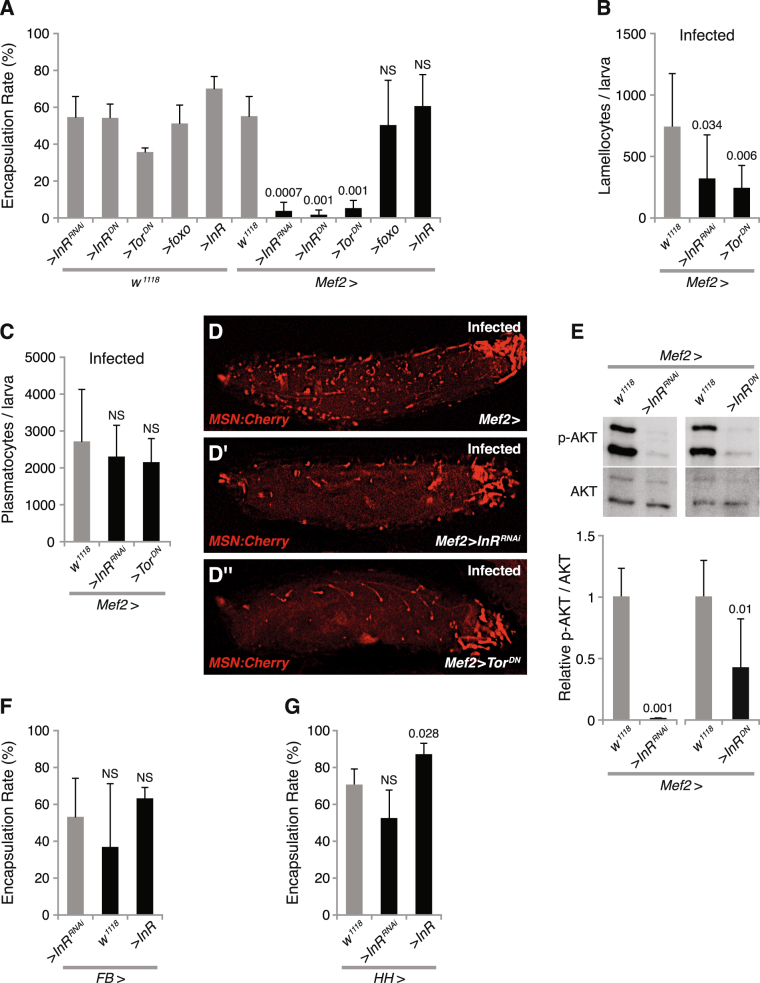Figure 1.
PI3K-AKT/TOR signaling in muscles is required for a cellular immune response against wasp infection. (A) Encapsulation rate when affecting insulin signaling, TOR signaling, and Foxo signaling in skeletal muscles with indicated genotypes. (B,C) Number of lamellocytes (B) and plasmatocytes (C) per larva after 12 h wasp infection, when suppressing PI3K signaling or TOR signaling with the indicated genetic constructs. (D,D”) msn-Cherry – labeled lamellocytes in larvae after 12 h wasp infection, when suppressing insulin or TOR signaling with the indicated genetic constructs. (E) Immunostaining of phospho-AKT from larval skeletal muscles, when suppressing insulin signaling by expressing InR RNAi or InR DN with Mef2-GAL4. Quantification of the immunostained bands is shown in the lower panel. (F) Encapsulation rates when suppressing or activating PI3K signaling in the fat body with the indicated genetic constructs. (G) Encapsulation rate when suppressing or activating PI3K signaling in hemocytes with the indicated genetic constructs. Data information: Encapsulation rates were determined in at least three independent experiments, and in total at least 100 larvae were analyzed. For hemocyte counts, at least eight larvae were analyzed for each genotype. Bars show averages and standard deviations. For immunostaining quantification, at least three independent experiments were analyzed. Bars show the average amounts of phospho-AKT, normalized to total AKT, and standard deviations. The P-values (unpaired t-test, unequal variance) are indicated, NS: not significant.

